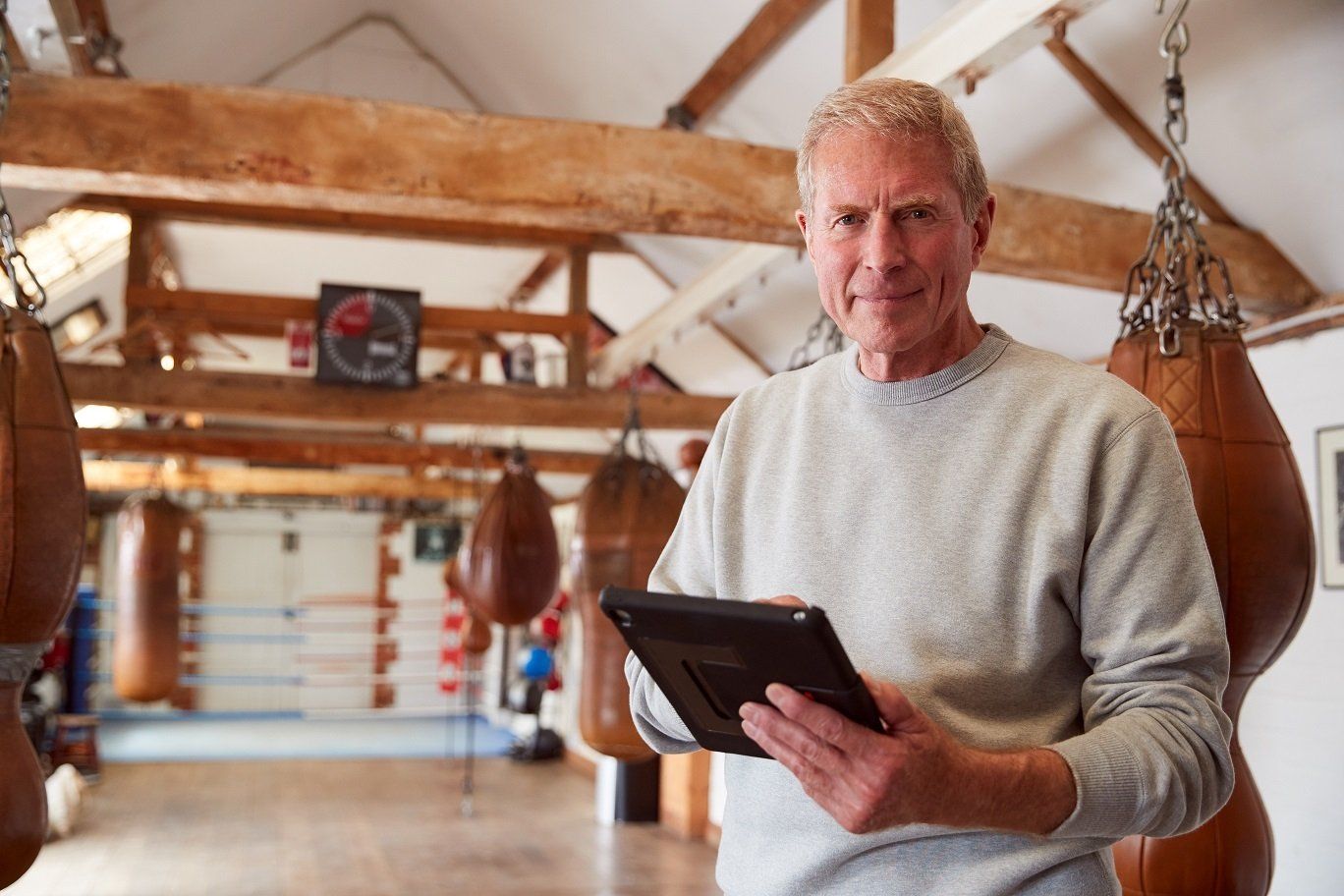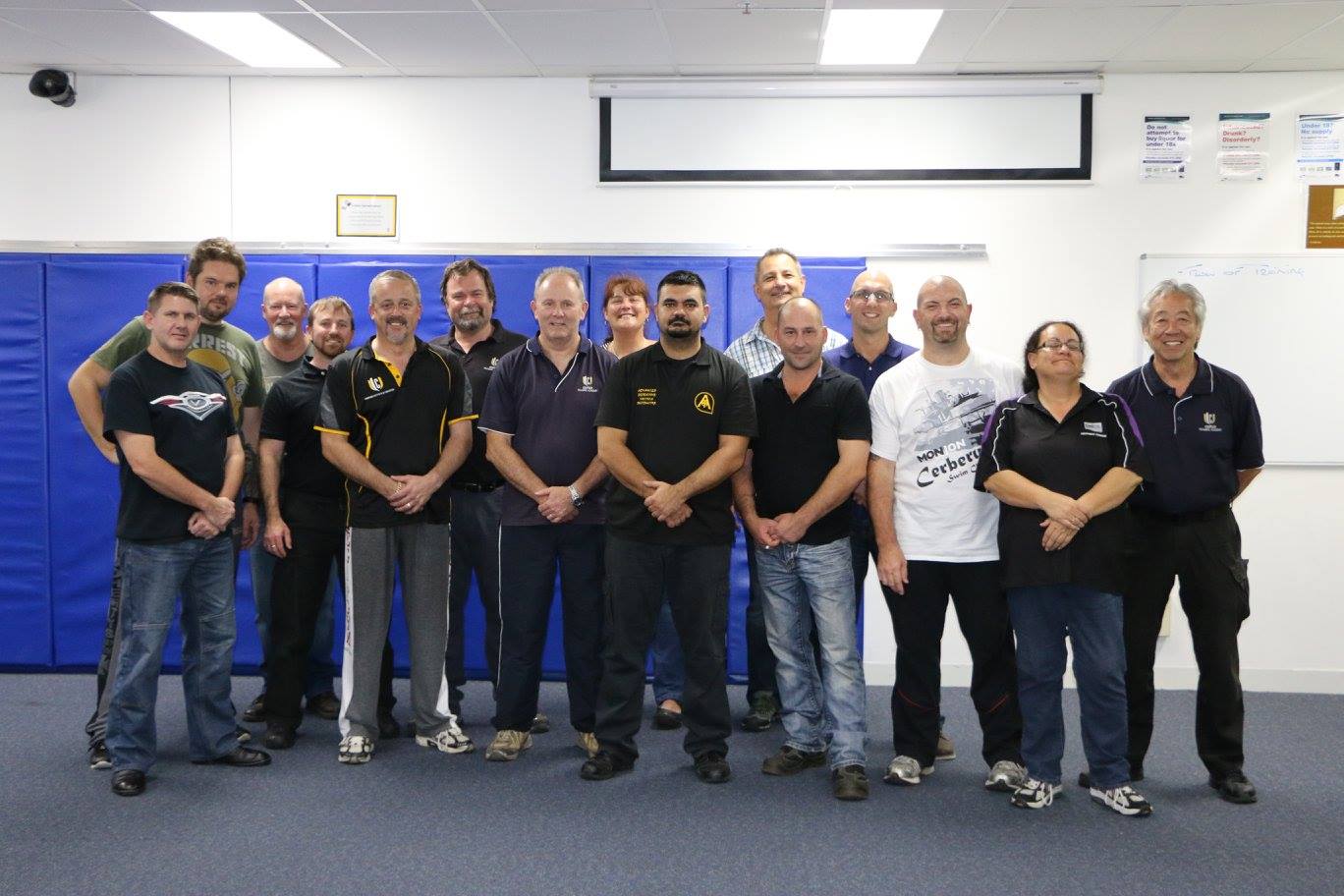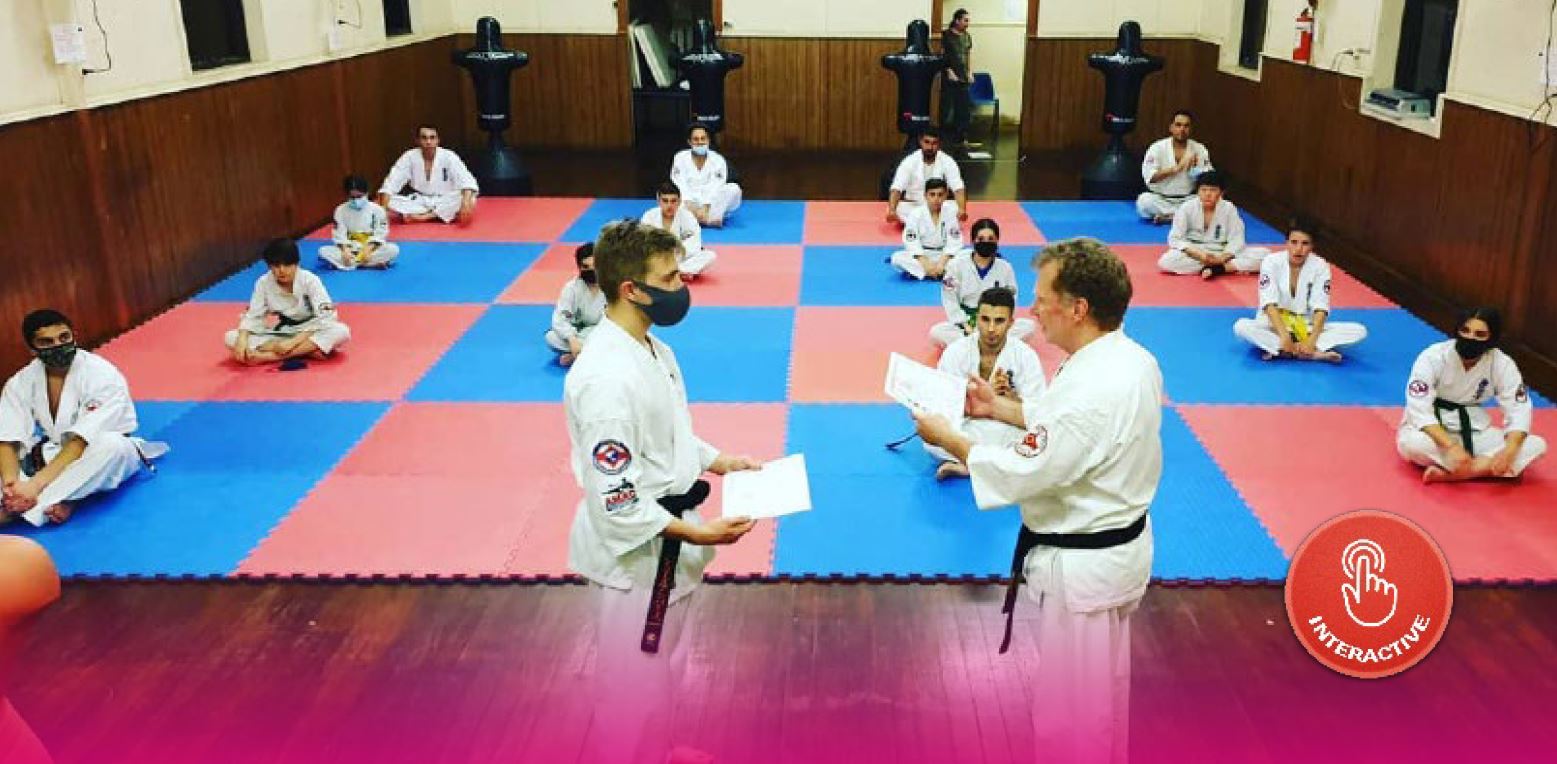Australasian Fighting Arts magazine Vol 9 No 6 Continuing Traditions of Shotokai Karate From Karate-Do Shotokai Association Australia.
FOLLOWING MASTER Gichin Funakoshi in the style of Shotokan Karate (later to be formed Shotokai Soyu Juku) was senior Shigeru Egami. After the loss of these two masters came another, who is still active in training today Master Yasuo Ikeda, (passed away in 1994).
Master Yasuo Ikeda, who trained under Master Egami, is respected as the highest ranked practitioner of the Shotokai system today. After many years of teaching at universities and his other dojo's, Master Ikeda formed the Soyu Juku Karate circle.
Shotokai Karate is relatively unknown in Australia (Soyu Juku being just the club name ... ) It was introduced to Victoria (Swan Hill) about nine years (1976) ago by a local chemist, David Stynes who, while importing various products, visited Japan quite often. He then helped introduce the style into many country areas.
The Melbourne proponent of the style is Graham Slater, 2nd Dan, who studied many styles but eventually settled on Shotokai as the most suitable and effective for his personal taste and needs. He and his contemporaries practiced in the old, unevolved Shotokai style. However now, with the link with Swan Hill, a strong bond has been created with Japan and a 'new stronger style has resulted.
As instructor of the Melbourne group, Graham Slater has visited Japan twice now (1983 & 85), most recently with a group of Student for training and grade testing. The group of Victorian Karateka experienced three weeks of hard training but emerged from Japan feeling they had learned some important lessons. The Melbourne club has earned Ikeda Sensei's respect and interest, and he is now dispatching his organisation's Chief instructor, Kazunobu Maekawa, 5th Dan, for a month long series of training seminars and demonstrations.
Much of the Karate philosophy and practice of Shotokai Karate is expressed in Master Egami's books, 'The Heart Of Karate' (also known as 'The Way of Karate: Beyond Technique'). The emphasis is on suppleness and flexibility, and generating power with full hip/body movement, and not the half hip recoil action anymore ...
It is also interesting to note that Ikeda Sensei's rank the highest in the Shotokai system is Godan, or 5th Dan. This is because the Shotokai has retained the traditional system, in which Godan was the highest level of the grading hierarchy.
THE END
Australiasian Fighting Arts magazine Vol 11 No 1 Re-introducing our popular – and most requested – former regular feature covering the Martial Arts Stylescene By Graham Slater
IN DESCRIBING the technique of practitioners of the Shotokai style of Karate, one could superficially compare it to the Shotokan style. However, the mind expression is very different when it comes to the technique of Shotokai – which uses principals not unlike those of Aikido, with varied strikes, punching and kicking and so on.
Shotokai seeks to develop the spiritual side of Karate, with emphasis on flexibility, and the true thoughts that the body and mind are one – resulting in a more flexible mind.
The Kihon (basics and line work) is varied of course, but the type most often practiced is “by the count”. The instructor gives the go rei (call) and students proceed up and down the hall executing set techniques. Sometimes go rei is called softly and sometimes loudly. When the go rei is soft the technique is slow and more precise; when loud they are performed as quickly and with as much commitment as possible. The idea is for the student to anticipate the go rei of the instructor, and to move with or slightly before it. Their imagination is that the go rei represents an opponent attacking.
Kate practice involves around twenty different Kates (forms) and they are practiced many ways. The technical side, again, is similar to the Shotokan. Both systems perform Kata in methods such as 'One movement at a time', then 'by sequence'; straight through slow or fast'; or even ‘with eyes closed'. But unlike the Shotokan there is no Kiai (shout) on certain techniques nor is there any pause between movements. Each one flows into the next. This Idea came about when it was decided that kiai would cause tenseness in ft body, and while one paused between techniques, it gave a split second for another opponent to attack.
To, further develop the Karateka physically, mentally and spiritually, Kata can be practiced very quickly actually sacrificing technique for speed to completely exhaust the student This practice is often done with a basic Kata such as Talkyoko Shodan (only consisting of moving In an H pattern with lower block and middle punches). This Kata may be practiced from five to fifteen minutes continuously, sending students Into a daze, even 'non-compus' and dropping to the floor, for the state which the student is trying to reach is a state of 'nothingness' where he can feel and act upon an opponent's attack before the opponent physically moves. This state enables him to feel the intent of an attack. This is Irimi.
Kumite (sparring): as in most Martial Arts there are many ways to practice this. The Shotokai practice little of sanbon or gohon kumite (three or five step prearranged sparring). Jiyu kumite (free sparring) is not practiced. However ippon kumite (one step sparring) is practiced diligently, it is mainly performed in a prearranged fashion with the attacking techniques having bow decided beforehand. The timing is the essence of their defense. The defender almost always moves into the attack as or slightly before the attacker moves. He now steps back; he may sometimes step to the side. This requires accurate timing: for to move forward into an oncoming blow with the wrong timing would surely mean 'suicide'.
The same practice is taken further by the defender having his eyes closed. Another advancement on that is for the attacker to be able to attack at any angle, and eventually the number of attackers can be increased to three, five; beside sight, perhaps hearing, or feeling the attack through vibration. Ultimately he will be relying upon Irimi being developed sufficiently to cope with the random attacks.
Naga waza (continuous technique) is the heart of the Shotokai kumite. Naga waza is split into three sections: naga zuki, naga shuto uchi, and naga geri The naga zuki and nags shuto can be practiced for great lengths of time by senior students sometimes for as long as one hour These movements are advanced practice . and are usually performed from brown belt up, where the student can boon to understand that the true spirit is being developed.
In naga zuki two students bow, then one attacks immediately with a punch. Once executed, the attacker never stops moving. If he has found himself past the defender he will turn and continue with another punch without stopping. This is all at maximum speed. As the two move the defender will block, evade, strike and throw his opponent. Both the attacker and defender create a mind of 'nothingness' and simply act upon each of their intentions.
In this practice there is no winner or loser. The attacker and defender move as one; they are in harmony with each other. After a short time the attacker becomes very weary but still attacks at his maximum speed. His vision might become blurry, his breath may come in gasps and he may lose control of his faculties. At this stage the defender is in full control: guiding the attacker with hand gestures. Although the attacker's energy is diminished he will be summoned with a shout by the defender to attack again and again until there is no physical movement left.
This can also be practiced with, any amount of opponents, from one opponent to the whole of the class.
THE END




